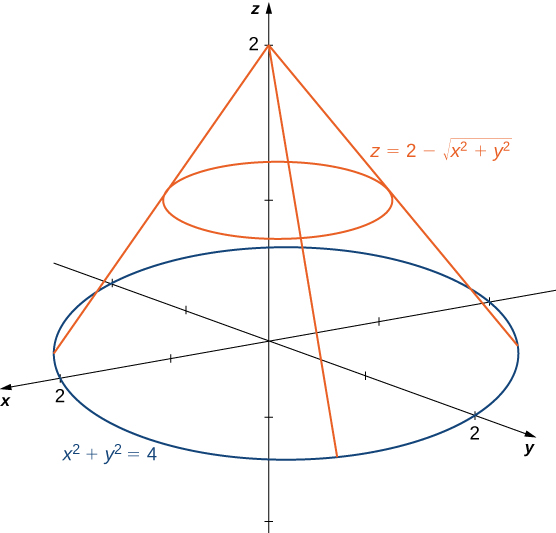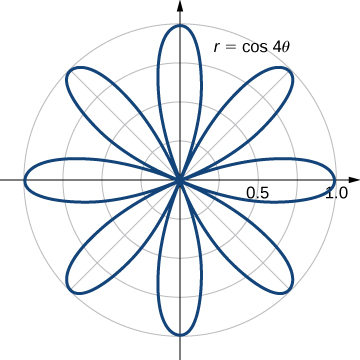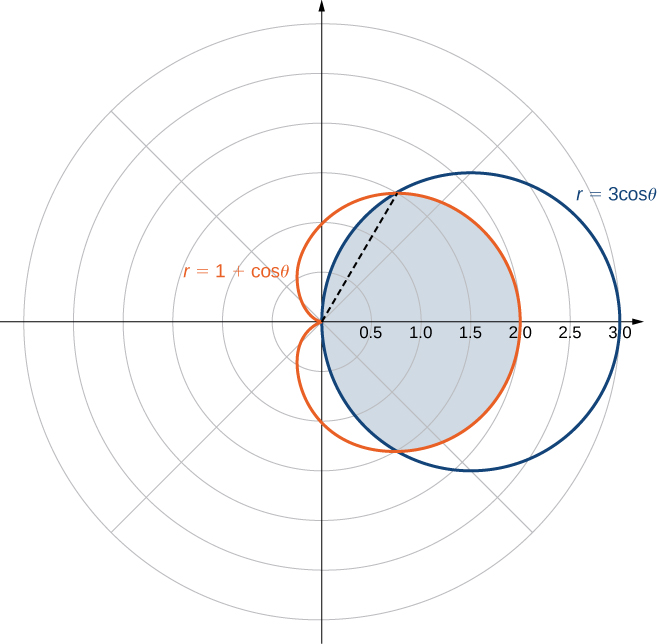| << Chapter < Page | Chapter >> Page > |
To answer the question of how the formulas for the volumes of different standard solids such as a sphere, a cone, or a cylinder are found, we want to demonstrate an example and find the volume of an arbitrary cone.
Use polar coordinates to find the volume inside the cone and above the
The region for the integration is the base of the cone, which appears to be a circle on the (see the following figure).

We find the equation of the circle by setting
This means the radius of the circle is so for the integration we have and Substituting and in the equation we have Therefore, the volume of the cone is
cubic units.
Use polar coordinates to find an iterated integral for finding the volume of the solid enclosed by the paraboloids and
cubic units
As with rectangular coordinates, we can also use polar coordinates to find areas of certain regions using a double integral. As before, we need to understand the region whose area we want to compute. Sketching a graph and identifying the region can be helpful to realize the limits of integration. Generally, the area formula in double integration will look like
Evaluate the area bounded by the curve
Sketching the graph of the function reveals that it is a polar rose with eight petals (see the following figure).

Using symmetry , we can see that we need to find the area of one petal and then multiply it by Notice that the values of for which the graph passes through the origin are the zeros of the function and these are odd multiples of Thus, one of the petals corresponds to the values of in the interval Therefore, the area bounded by the curve is
Find the area enclosed by the circle and the cardioid
First and foremost, sketch the graphs of the region ( [link] ).

We can from see the symmetry of the graph that we need to find the points of intersection. Setting the two equations equal to each other gives
One of the points of intersection is The area above the polar axis consists of two parts, with one part defined by the cardioid from to and the other part defined by the circle from to By symmetry, the total area is twice the area above the polar axis. Thus, we have
Evaluating each piece separately, we find that the area is
Find the area enclosed inside the cardioid and outside the cardioid

Notification Switch
Would you like to follow the 'Calculus volume 3' conversation and receive update notifications?